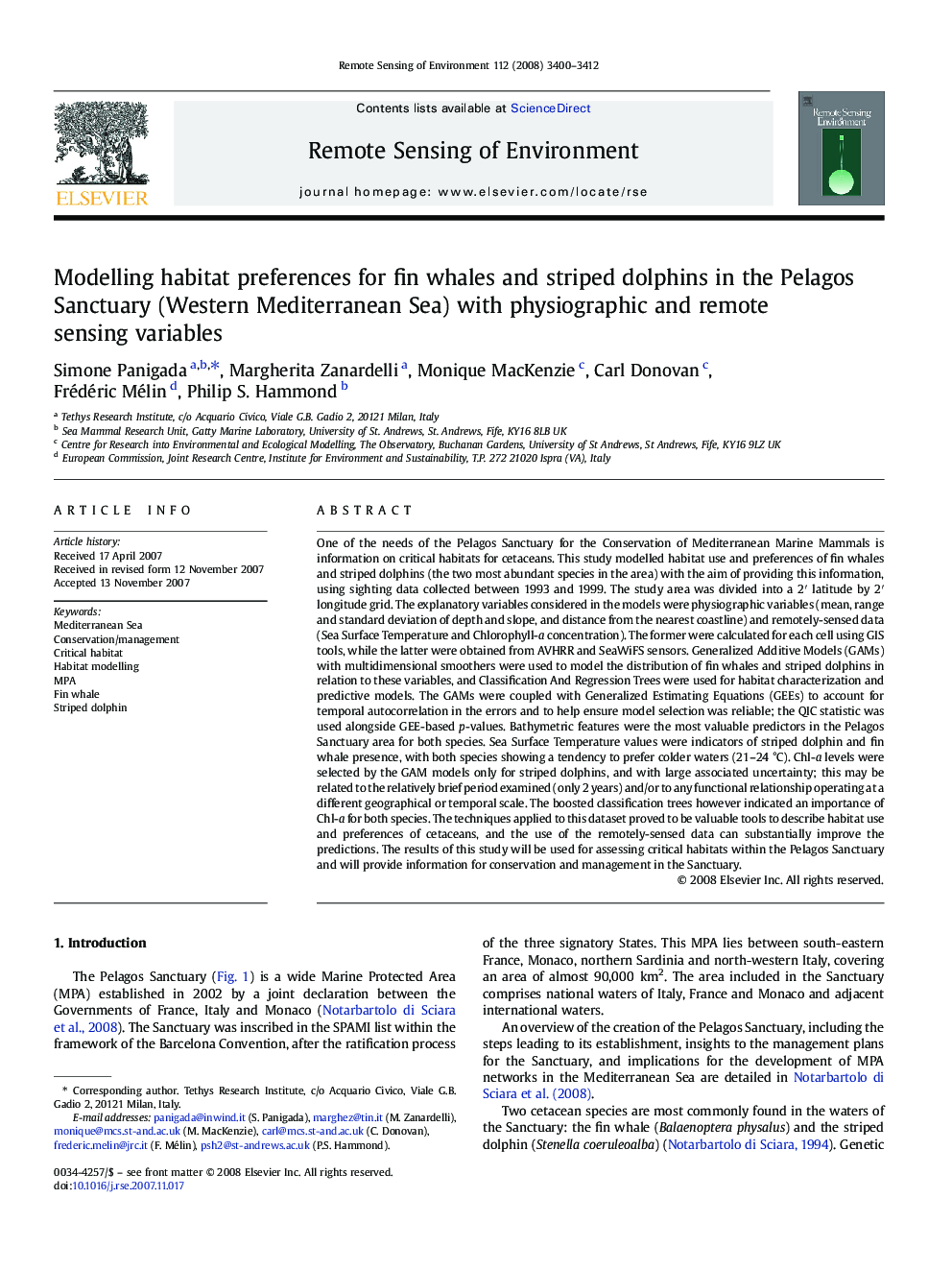| کد مقاله | کد نشریه | سال انتشار | مقاله انگلیسی | نسخه تمام متن |
|---|---|---|---|---|
| 4460065 | 1621326 | 2008 | 13 صفحه PDF | دانلود رایگان |

One of the needs of the Pelagos Sanctuary for the Conservation of Mediterranean Marine Mammals is information on critical habitats for cetaceans. This study modelled habitat use and preferences of fin whales and striped dolphins (the two most abundant species in the area) with the aim of providing this information, using sighting data collected between 1993 and 1999. The study area was divided into a 2′ latitude by 2′ longitude grid. The explanatory variables considered in the models were physiographic variables (mean, range and standard deviation of depth and slope, and distance from the nearest coastline) and remotely-sensed data (Sea Surface Temperature and Chlorophyll-a concentration). The former were calculated for each cell using GIS tools, while the latter were obtained from AVHRR and SeaWiFS sensors. Generalized Additive Models (GAMs) with multidimensional smoothers were used to model the distribution of fin whales and striped dolphins in relation to these variables, and Classification And Regression Trees were used for habitat characterization and predictive models. The GAMs were coupled with Generalized Estimating Equations (GEEs) to account for temporal autocorrelation in the errors and to help ensure model selection was reliable; the QIC statistic was used alongside GEE-based p-values. Bathymetric features were the most valuable predictors in the Pelagos Sanctuary area for both species. Sea Surface Temperature values were indicators of striped dolphin and fin whale presence, with both species showing a tendency to prefer colder waters (21–24 °C). Chl-a levels were selected by the GAM models only for striped dolphins, and with large associated uncertainty; this may be related to the relatively brief period examined (only 2 years) and/or to any functional relationship operating at a different geographical or temporal scale. The boosted classification trees however indicated an importance of Chl-a for both species. The techniques applied to this dataset proved to be valuable tools to describe habitat use and preferences of cetaceans, and the use of the remotely-sensed data can substantially improve the predictions. The results of this study will be used for assessing critical habitats within the Pelagos Sanctuary and will provide information for conservation and management in the Sanctuary.
Journal: Remote Sensing of Environment - Volume 112, Issue 8, 15 August 2008, Pages 3400–3412